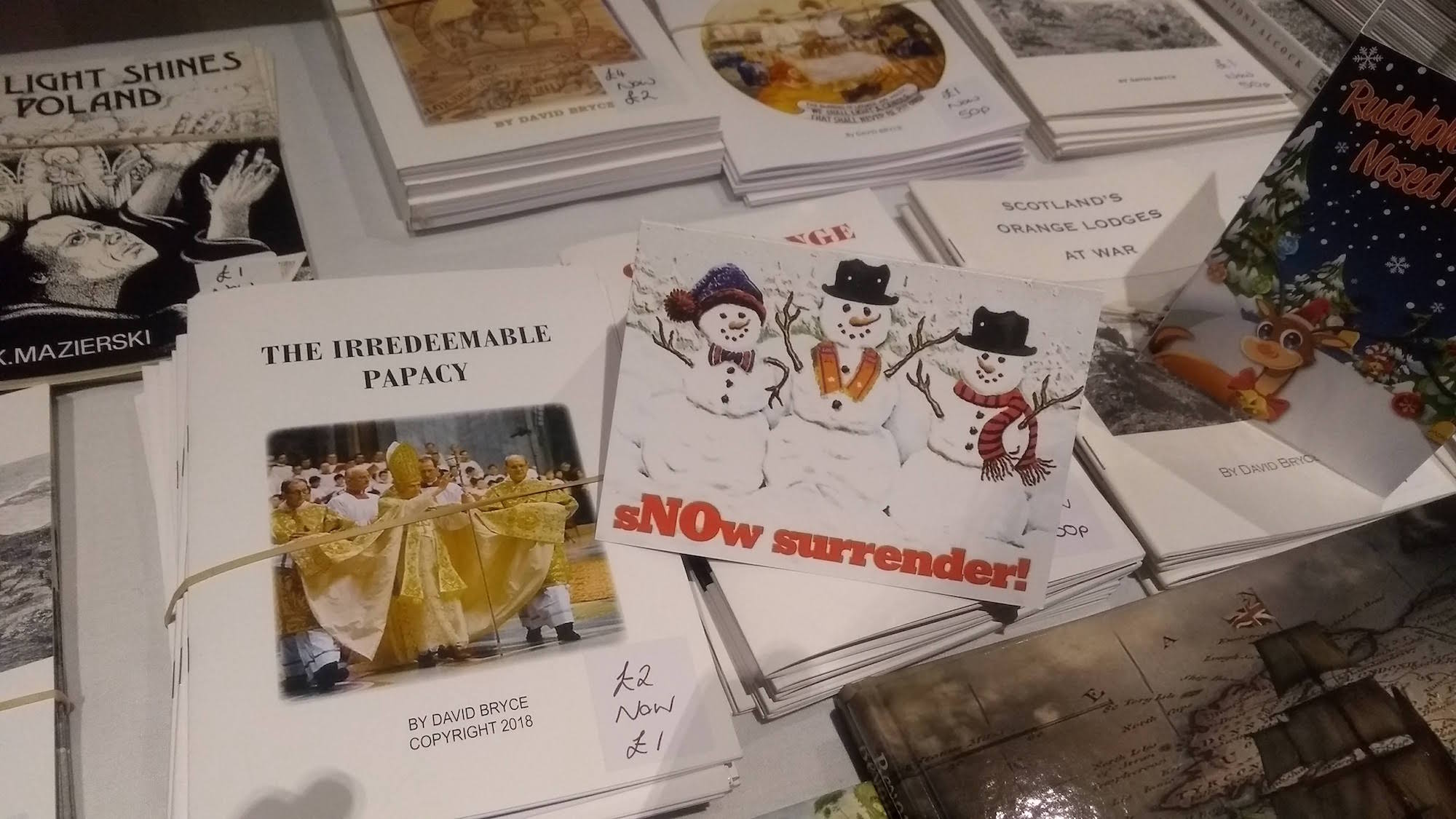Scotland’s Sectarian Orange Order Is Trying to Get with the Times
The Orange Order want you to know that they don’t hate Catholics. Nor do they sit around in meetings discussing how they hate Catholics, people from “Southern Ireland” or – for that matter – any other ethnic or religious group.
“Obviously we are opposed to the Catholic Church, but that’s different,” the Grand Master of the organisation, having cornered me for a chat, quickly clarifies. And to be fair, it is different – you can be opposed to an institution without vilifying its individual members.
That’s something the Orange Order – or the Grand Orange Lodge, to give them their proper title – should know all about. In their 220-year history as a “Protestant fraternity”, they have never been more unpopular. They act as a byword for all that’s considered wrong with modern Scotland: an intersection of bigotry, violence and the country’s problematic relationship with alcohol. The Lodge are an unavoidable feature of life in west central Scotland during each summer’s “marching season”, meaning that everyone has an opinion on them – and it’s nearly always hostile.
That’s not surprising, given that they are an organisation whose idea of “community outreach” usually extends to parading through residential areas at 10AM on Saturdays with a cacophony of drums and flutes. Their events can also attract people who like singing songs about ethnic cleansing and being up to their knees in “Fenian blood”, wearing offensive fancy dress, or assaulting a Catholic priest outside his chapel. Sometimes Arlene Foster even shows up.
It was the incident with the priest, which happened in July, that has provoked the latest crisis for the Order. Upwards of 80,000 signatures piled on to an online petition calling on the authorities to “stop these marches”, and local politicians were quick to jump on the anti-OO bandwagon. Subsequent Orange parades past the church have been denied permission, leading the Lodge to declare that Glasgow had created its first “religious no-go zone”.
The Lodge feels victimised, discriminated against and misunderstood by wider society. They have found themselves having to justify their existence in a secular Scotland which has largely moved on from sectarianism, and where the prevailing perception of them is of extremists obsessed with ancient battles, who enjoy spending their weekends and evenings inconveniencing people for the sake of it.
It’s this “image problem” that led to the Orange Order booking out the conference suite of a Glasgow hotel last weekend. Promising to “unpeel the Orange”, it was an attempt at reaching out to the public and casting the organisation in a new light. It seemed the unpeeling did not appeal to many, with virtually everyone there an existing supporter of the Orange Order, queuing up to listen to a succession of speakers talk about their need to “modernise”, without ever really specifying how or why. Previous attempts at that, like the superhero character their Northern Irish branch created a decade ago, have not got very far.
One of the more interesting contributions was from Michael Rosie, an Edinburgh University sociologist who has “been up close” with the Orange Order for the last five years. He wanted to understand what sustains them and keeps sizeable numbers of young men active in a formal religious institution. Was it, as the “middle class sneering” of civic Scotland would contend, just mindless bigotry? No, he reckoned. As a self-confessed left wing, atheist academic, what he’d found was a tight knit community where people know each other and feel a sense of fellowship and purpose. In an atomised society, where most traditional working class organisations have disappeared or are in terminal decline, that’s significant.

But for all that it’s nice that its members feel part of something, there is no getting away from what the Orange Order actually is. Its entire ethos is defined in opposition to another religious group and upholding the British crown – the Order has its origins as a “counter-insurgency force” which fomented sectarianism and consolidated colonial rule in 18th and 19th century Ireland.
That’s not quite how the Orange Order would put it; they prefer banging on (sometimes on a big drum) about protecting their “culture and traditions” without getting too caught up in where they came from. But the slideshow of Orange Lodges around the world just happened to follow the boundaries of the British Empire, and the merchandise stall was selling pamphlets about “The Irredeemable Papacy” alongside Christmas cards and chocolate bars with “sNOw Surrender” on them, a play on the loyalist slogan “No Surrender”.
“I love all the stuff about the British Empire, but we can’t have a culture that’s preserved in aspic. We have to make it relevant to people,” said Mark Dingwall, editor of a Rangers fan site, as he acknowledged the Order’s diminished standing in Scottish society. This was blamed on both the ascendance of Scottish nationalism (a recurring theme) and the woolly liberals of the Church of Scotland, who these days don’t even mention the “P word”, never mind ensuring that Sunday school goers are up on what King William III did 300 years ago, or the evils of Papism.
The Orange Order may be right in their perception that they are poorly understood, to the extent that most people don’t know much about them beyond what they see on the street, social media or viral petitions condemning them. But if the Unpeeling the Orange event represented their big effort at overturning their toxic reputation, they still have a long way to go. When you unpeel the Orange Order, it’s a more complicated than casting them all as bigots – but the issues with them are deep-seated and historical.
This article originally appeared on VICE UK.